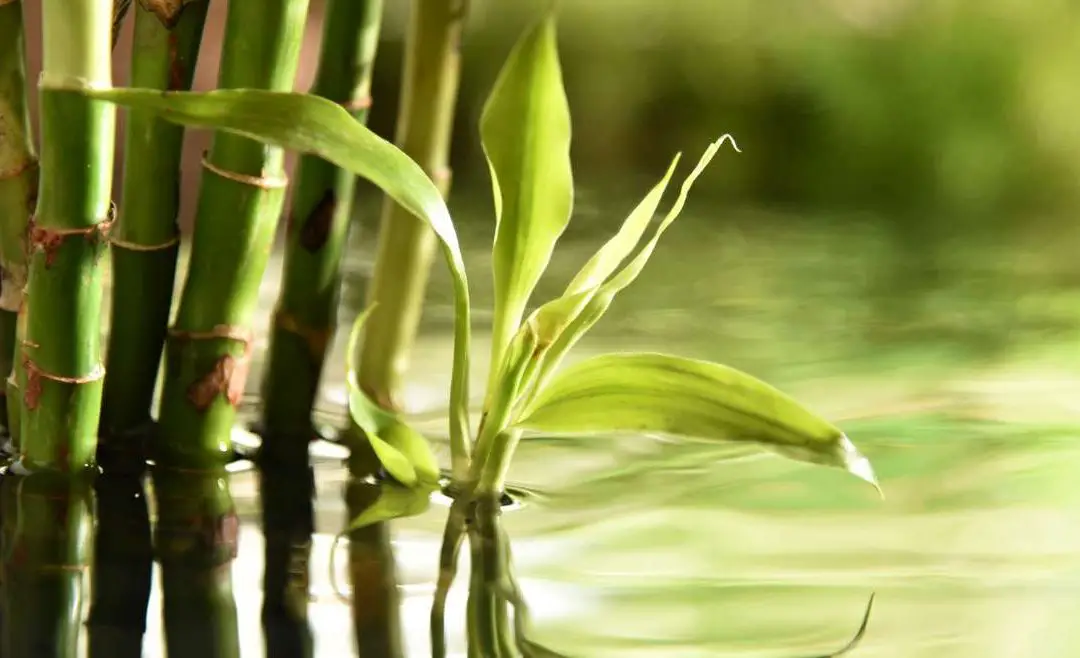The world of bamboo is filled with fun facts. Yet for every morsel of truth, the internet (and other sources) will gladly provide a blatant fallacy or at least an honest misunderstanding. After publishing more than 400 articles on this website alone, I may be guilty of an inaccuracy here and there myself. But I work tirelessly to avoid it. So if you happen to catch any mistakes on this website, feel free to let me know. And in the meantime, I’d like to point out and clarify some of the more common myths and misconceptions about bamboo, including those related to how it lives and how it dies.
Bamboo myths: facts and fiction
Bamboo is an incredible plant with some astonishing characteristics. But as we sing its praises, it’s easy to get carried away. With so many species to consider, growing all over the world, it’s also easy to get overwhelmed, confused, or misled.
NOTE: If you’re looking for the other kinds of bamboo myths, please refer to my lengthy article on Bamboo symbolism in mythology and folklore.
Myth #1: Bamboo is an amazing plant species
True, bamboo is amazing. But, it’s not a species. Technically, bamboo is a subfamily of the grass family, Poaceae or Gramineae, and includes about 1,400 distinct species. Many of these species are extremely similar and difficult to differentiate, even for experts. But there’s also some enormous diversity, meaning that what’s true about one particular species isn’t necessarily true about all bamboo in general.
Myth #2: Lucky bamboo is a popular species of bamboo
True, lucky bamboo (pictured at the top of this article) is very popular. But it is not a true species of bamboo. It’s not even a member of the grass family. It’s actually a type of Dracenea, a very common variety of houseplant. This confusion about lucky bamboo has led to a number of other misconceptions about bamboo, including items #3 and #4.
See my article on Lucky Bamboo for more details.
Myth #3: Bamboo makes a wonderful houseplant
There are hundreds of wonderful species and cultivars of ornamental bamboo you can plant around your house. But if you want to grow bamboo inside your house, it’s not such a good idea. Lucky Bamboo (item #2) grows perfectly indoors, requiring minimal light and preferring a steady, even temperature. But bamboo, as a grass, really belongs outdoors in the fresh air and sunshine. There are just a handful of bamboo species, like Hiroshima Bamboo, that will tolerate an interior setting, but it’s not optimal. For best results, you might want to have a few different bamboo plants and rotate them in and out of your home every few months.
See my article on Growing bamboo indoors to learn more.
Myth #4: Bamboo grows in swamps and ponds
Unlike Lucky Bamboo (refer again to item #2), true bamboo will not grow directly in water. Bamboo needs well-drained soil, otherwise, the roots will begin to rot and the plant will die. In fact, it’s easier to kill a bamboo plant by overwatering than by trying to under-water it. As a general rule, bamboo likes to be moist, but not soggy. If you plant a stalk of true bamboo in a vase of water, as you would with Lucky Bamboo, you should not expect it to survive.
Check out my article on Growing bamboo in wetlands for more information and to learn about the best species to grow in wet soil.
Myth #5: Bamboo is invasive
Here we have one of the most pervasive ideas about bamboo. And it’s a bit more complicated. First of all, we usually divide bamboo into two categories: Runners and Clumpers.
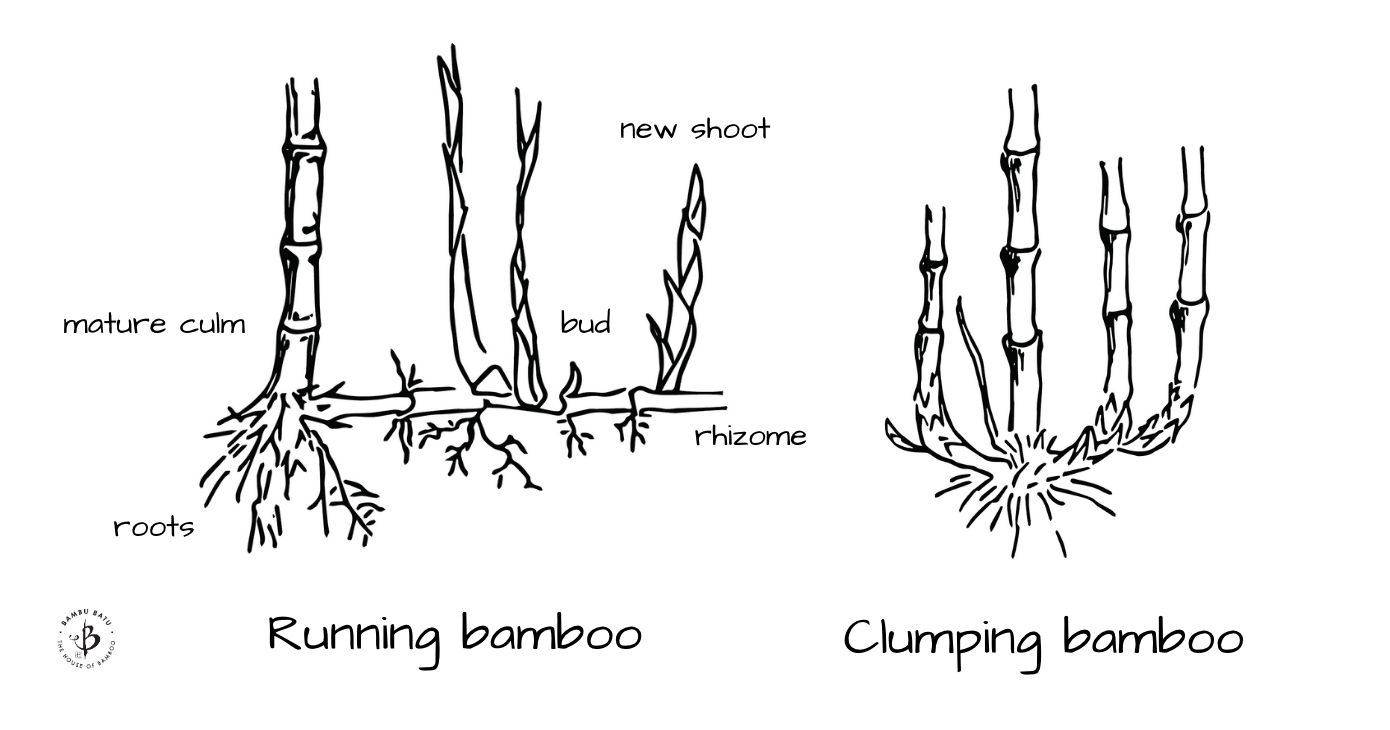
Running bamboo has rhizomes that will spread far and wide, expanding indefinitely. Clumping bamboo, on the other hand, keeps new growth close to the mother plant. At the same time, there are runners that run slowly, and there are “open clumpers” that may spread a bit wider. But it’s the runners you have to be careful with.
Nine times out of ten, when a running bamboo gets out of control, it’s because the owner was not doing their job. Bamboo does actually require maintenance, pruning, etc. And when you plant a running bamboo, especially in a small suburban garden, it’s essential to use some kind of root barrier. I recommend the containment trench.
Also, when we take about plants being “invasive”, that usually refers to plants that will go to seed and proliferate into non-native settings, choking out local plant life. In California, for example, you can find all kinds of exotic plants from South Africa or Chile out on the hiking trail. That’s because someone a couple miles away had it growing in their garden, and the wind carried its seeds into the riparian foothills. Unmanaged bamboo may expand, but it won’t truly invade.
Take a look at my article Is bamboo invasive? for more details.
Myth #6: You can kill bamboo with bleach or gasoline
Seriously? Even if this were really effective, just don’t even go there. A well-established bamboo grove can be nearly impossible to remove, but this is not the way. There are laws against pouring gasoline in your backyard, and for good reason. Hire some college kids and give them shovels and axes, and maybe a Sawzall. In the worst case, you might even need to rent a back-hoe. But please don’t resort to bleach and gasoline.
Myth #7: Bamboo is the poor man’s timber
This used to be true, but not so much anymore. The largest swaths of bamboo are clustered around the equator, meaning they are mostly in developing countries. In these parts of the world, bamboo is basically free, and so many cultures traditionally used it for all their construction needs. But now, in the 21st century, many of those same societies look down on bamboo as the “poor man’s timber.” Instead, they want to build with modern, Western materials.
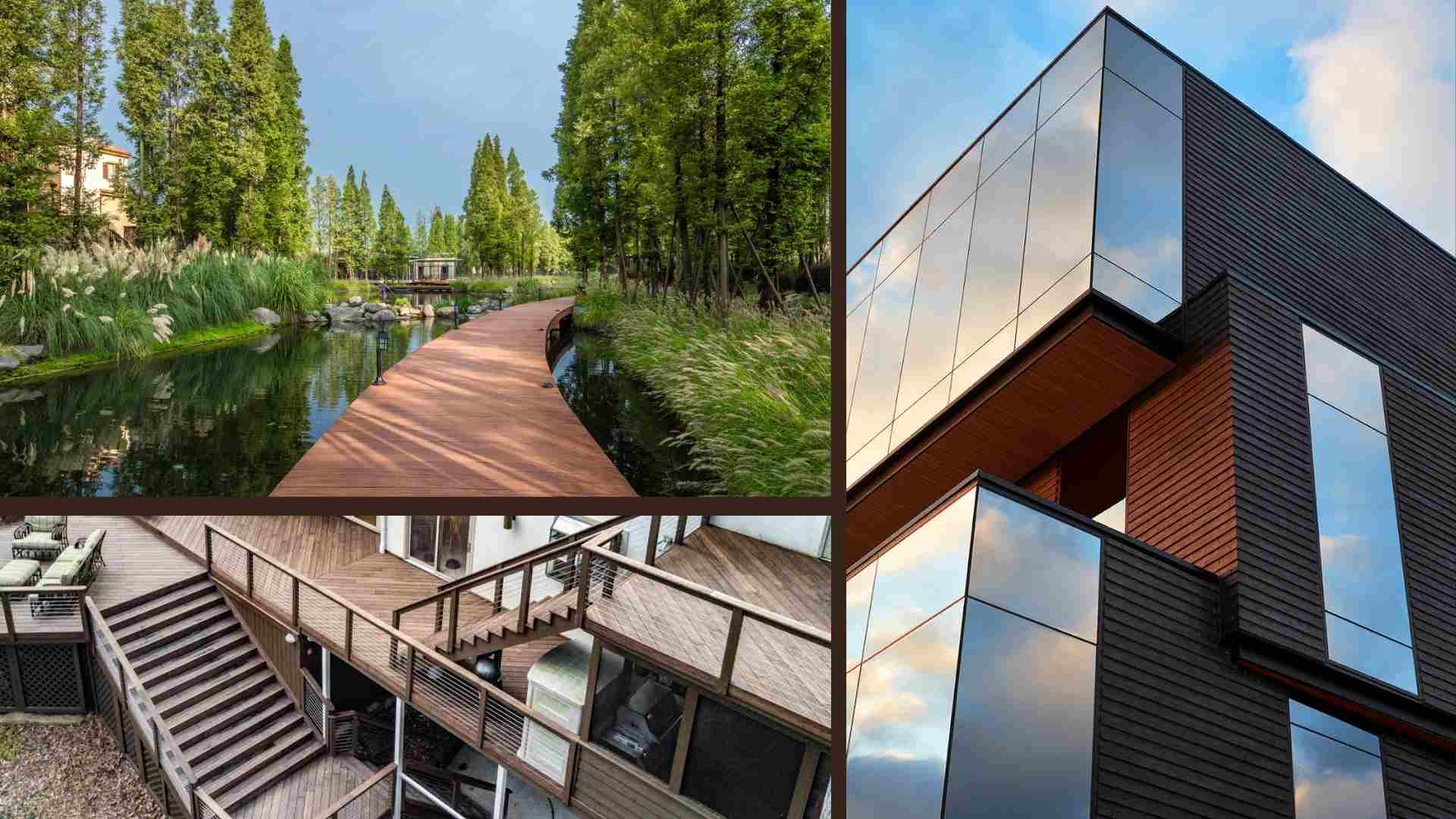
Concrete, steel, and aluminum have their advantages, but they aren’t necessarily superior to bamboo. And in terms of sustainability, these are some of the very worst emitters of greenhouse gasses. Today, the possibilities for building with bamboo are stupendous. Whether you’re using simple bamboo poles, or processing the bamboo into a laminated composite (pictured above), the options are unlimited, and so is the price range.
See my articles on Building a bamboo house and Fused bamboo for exterior construction.
Myth #8: Bamboo grows three feet a day
As a matter of fact, this is true, but only with certain species in optimal conditions for a very brief period. Giant timber bamboo varieties can sometimes grow more than 100 feet tall. Amazingly, this height is achieved in a single growing season, which lasts about two to three months. That means there is a short stretch when the bamboo really is growing three feet a day.
In the following year, those massive poles will not grow any taller. But new shoots will emerge, while the older canes continue to produce new leaves and branches.
So don’t expect your garden variety bamboo to grow this fast.
Myth #9: It takes five years to replace a bamboo tree
There are many comparisons between trees and bamboo, with bamboo growing much faster. But bamboo is a grass, not a tree, so they have completely different growth habits. Trees start from a seed and grow a little bit each year, taking 15 to 50 years to reach maturity, depending on species and conditions.
As a grass, bamboo produces many shoots or culms. In the first year, it will produce very small culms. And once the growing season has ended, they won’t get any taller. But the wood will harden and the culm walls will thicken. (See #8.) The next year, the plant expands, with new shoots producing slightly larger culms that will get a little bigger and taller than those of the previous year. This continues each year, until the bamboo is fully mature, producing maximum-sized culms on an annual basis. Those big culms are at their prime after 3 to 6 years.
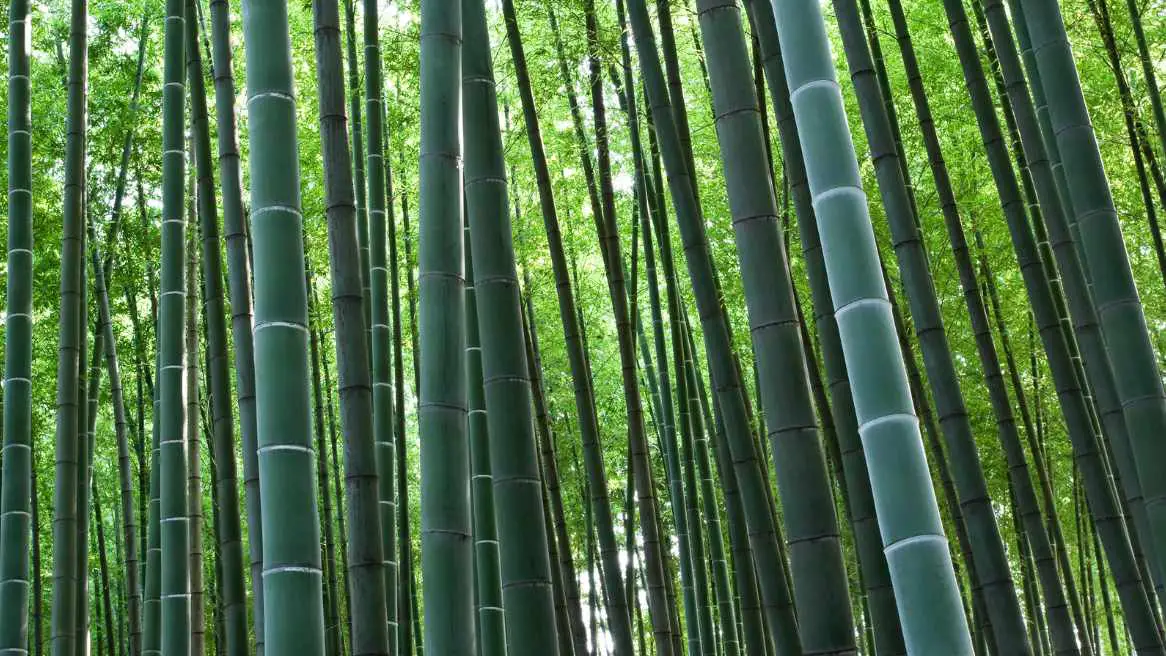
For most purposes, under proper management, you would harvest about 20-25% of the poles each year. This way, you can harvest annually. Because the bamboo is established and mature, it will continue to produce full-sized poles every subsequent year, barring drought or other calamity. However, for the highest quality, it’s better to leave the newest culms in the ground for two or three years before harvesting. This allows the walls to thicken and the wood to harden. If the culms remain in the field for too long, they eventually begin to age and decay. That usually happens after about 8 to 12 years, depending on the species.
So, to summarize, it takes about 6 to 8 years for a bamboo seedling to reach maturity. From that point on, the plant will produce another wave of full-sized culms each and every year. Then you can harvest continually, without replanting. But if you responsibly harvest 20% of your poles each year, you will end up harvesting poles that are five years old. You can keep doing this for the life of the bamboo plant, which could last 30 to 100 years depending on the species.
Myth #10: An acre of bamboo stores more CO2 than trees
This is an interesting case, because so many people are talking about carbon sequestration these days. Bamboo’s explosive growth rate means it collects carbon faster and generates oxygen more quickly than trees. But there’s only so much carbon stored in the soil.
The real advantage is in the fact that when bamboo is harvested, the plant still lives, with the root system serving as an ongoing carbon sink. When a tree is cut down, the CO2 is released back into the atmosphere. Furthermore, the wood fibers of trees and bamboo store a certain amount of carbon as well, about 1.8 pounds of CO2 per pound of bamboo, in fact. So, because bamboo gets harvested annually, it’s locking away this quantity of CO2 each year. And in that way, the bamboo will sequester more carbon, but probably not in the soil.
See our detailed article on Bamboo and Carbon Credits.
Myth #11: Bamboo requires no pesticides or fertilizers
As a miracle crop, bamboo supposedly grows at a record-breaking pace without the need for any additives or supplements. This is one of those classic exaggerations that sometimes gets us into trouble. In its native habit, Moso Bamboo in China or Asper Bamboo in Indonesia absolutely flourish under the care of Mother Nature.
But when you adapt these plants to your garden or try to cultivate them at scale in a new location, they will need a little extra help. For the healthiest and most vigorous garden, with lush foliage or robust shoots, it’s a good idea to add some manure or compost to your bamboo once or twice a year. You shouldn’t need pesticides, so long as the rest of your garden is healthy and the soil is kept in balance.
On a commercial scale, however, if you have rows and rows of an Asian bamboo species in North America or Africa, you’ll probably run into some insects or fungus. You can generally combat these with low-impact, organic remedies. Indeed, bamboo is far more hardy and resilient than cotton or any tender food crop.
Myth #12: Bamboo comes from Asia
There’s a strong connection between bamboo and Asia, but believe it or not, Europe is the only inhabited continent with no endemic bamboo population. South and Central America, from southern Chile well into Mexico, are brimming with neotropical bamboo. Colombia and Ecuador are home to some of the largest and most economically important bamboo plantations outside of China.
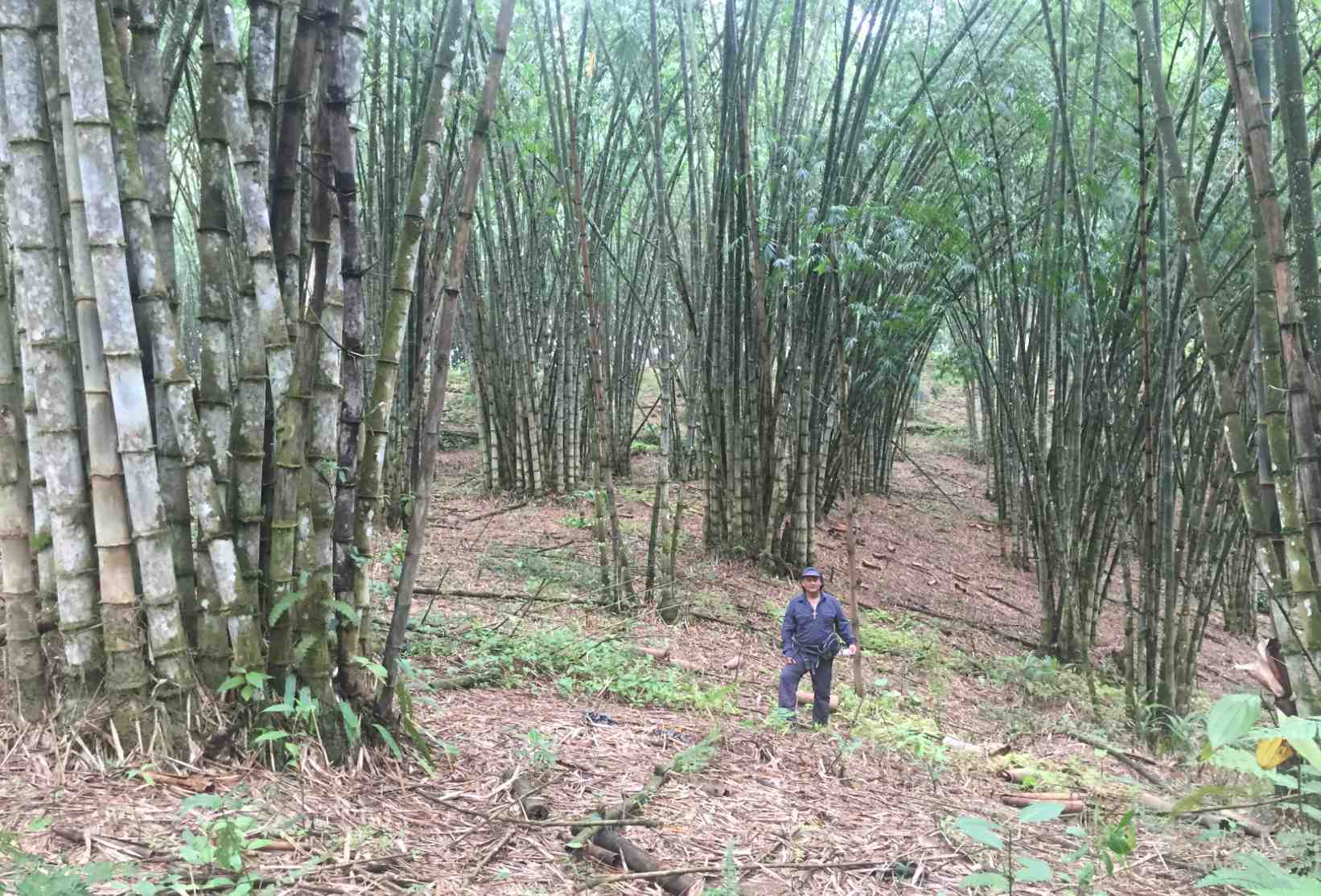
Africa is also rife with indigenous bamboo, just a handful of native species, but millions of hectares in Ethiopia alone. Northern Australia has a few subtropical species as well, up in the tropical extremities. And even the southern United States, east of the Mississippi, has three bamboo strains of its own, belonging to the genus Arundinaria.
Myth #13: Bamboo prefers tropical weather
If you just spent a week in Bali and admired the massive groves of Dendrocalamus, then we forgive you. (Although I’m still gonna be jealous.) The bamboo in that part of the world is truly spectacular. But you can also find majestic bamboo forests in China and Japan, where it snows every winter. Some species of mountain bamboo even thrive in the lower elevations of the Himalayas. And one species, Sasa kurilensis, is native to Russia.
Take a look at this handy guide to Growing bamboo in Canada.
Conclusions
Not everyone needs to be an expert in all things bamboo. But it’s a good idea to get your facts straight before you go proselytizing from the mountain top. As far as this list is concerned, many of the distinctions are pretty nit-picky. The point is that what’s true about some bamboo probably can’t be said about all bamboo. And above all else, you really need to know the difference between true bamboo and lucky bamboo. And if you’re selling bamboo products, then you really shouldn’t use pictures of lucky bamboo in your promotional material.
FEATURED IMAGE: Lucky bamboo growing directly in water. True bamboo doesn’t do this.

